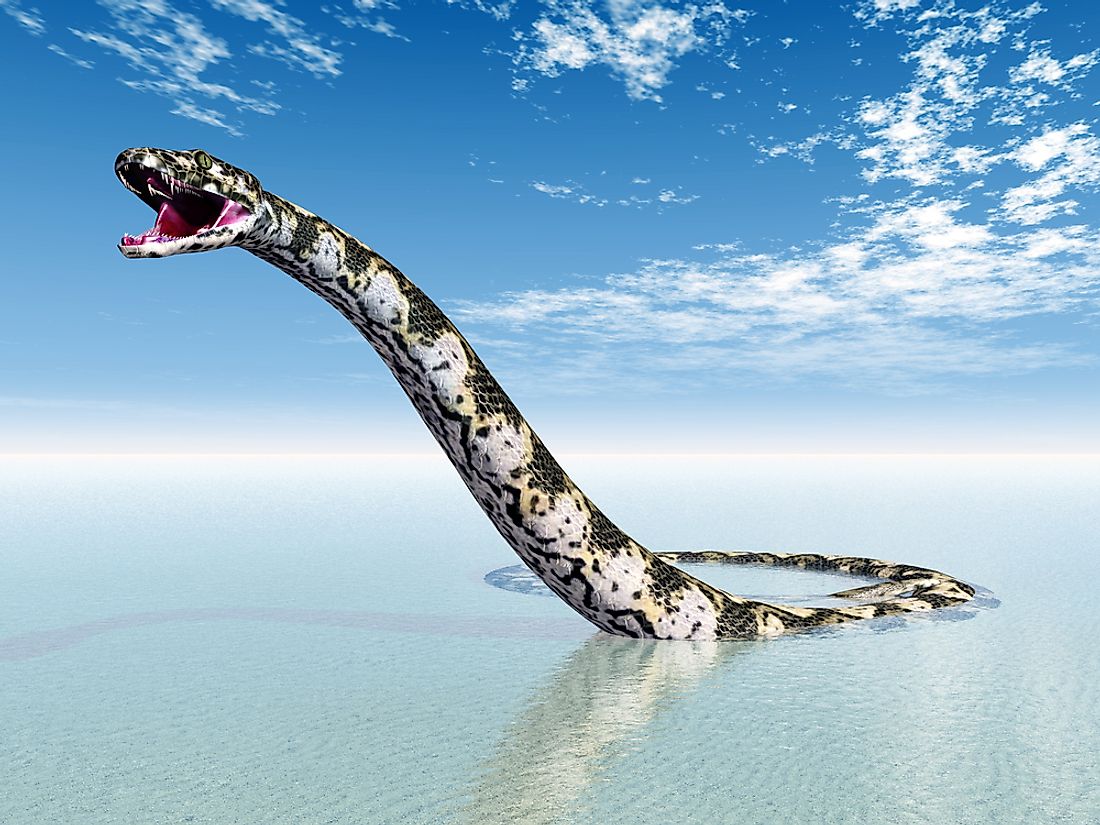What Was The Titanoboa?

The Titanoboa is an extinct snake species that is believed to have inhabited South America during the Paleocene Epoch. Paleontologists discovered numerous fossilized remains of the prehistoric snake in 2009 in coal mines in Colombia. While Titanoboa is dwarfed in size by the dinosaurs, the prehistoric serpent is recognized as the largest snake to have ever lived. The snake reached a maximum weight of 2,500 pounds and a maximum length of 42 feet, which is almost twice as large as the world’s largest snake, the 25-foot long and 500-pound giant anaconda. Even the snake’s name “Titanoboa” illustrates its immense size, as it means “titanic boa.” The sole species of the prehistoric snake to be discovered is the “Titanoboa cerrejonensis.”
Description
The immense weight of the snake was not evenly spread throughout its body but was instead thickest at its middle part, where it was about three feet in diameter. A simple comparison between the fossilized vertebrae of the Titanoboa and that of modern boa shows that the Titanoboa was at least double the size of the largest modern snakes. Before the discovery of the Titanoboa by paleontologists in 2009, the title for the largest snake of all time belonged to the extinct Gigantophis. Residing in prehistoric Africa, Gigantophis is believed to have been 33 feet in length and weighed at least 1000 pounds, certainly huge by modern standards but eclipsed in size by the Titanoboa.
Habitat
The snake is believed to have inhabited the prehistoric jungles of South America, in present-day Colombia and Peru. These jungles experienced soaring temperatures and high humidity levels, conditions which are thought to have made it possible for the Titanoboa- a cold-blooded reptile to attain its immense size. For a snake its size, movement on land would have been cumbersome and is therefore believed to have spent most of its time in swamps and marshes, as is the case with the modern anaconda.
Diet
The Titanoboa shared the habitat with other giant reptiles of the Paleocene era, including the one-ton prehistoric turtle; the Carbonemys, a favorite prey item for the serpent. However, the snake is believed to have primarily fed on fish. Researchers believe the snake did not hunt like the modern-day constrictors pythons and anacondas, through constricting its prey to death despite its similarity in appearance and absence of poisonous fangs. The Titanoboa is believed to have shared the hunting methods of crocodiles, ambushing prey near watering areas and snapping its powerful jaws around the prey’s neck and drowning it. Since the snake relied on the element of surprise, its body is believed to have possessed a dull coloration that blended appropriately with the environment.
Misconceptions
There has been a romanticized notion that the Titanoboa often clashed with dinosaurs, and even preying on them, with a fight between Tyrannosaurus Rex and Titanoboa being a novel idea often discussed. However, paleontologists agree that such contests never happened as Titanoboa appeared on earth in the Paleocene epoch, which was millions of years after the dinosaurs were wiped off during the K/T extinction event. The Titanoboa did, however, face large foes in the form of prehistoric crocodiles.











